Can a Pug Eat Lettuce?
Date Published: February 16, 2024 | Last Modified: February 18, 2024
Before we dive into the crunchy world of Lettuce for pugs, it's important to establish from the start that feeding your pug this leafy green is indeed safe. In this article, we will explore the potential health benefits of pugs munching on Lettuce, weigh the pros and cons of incorporating it into their diet, address safety concerns (spoiler alert: there aren't many), discuss whether Lettuce is toxic to pugs, and determine if it's actually good for them.
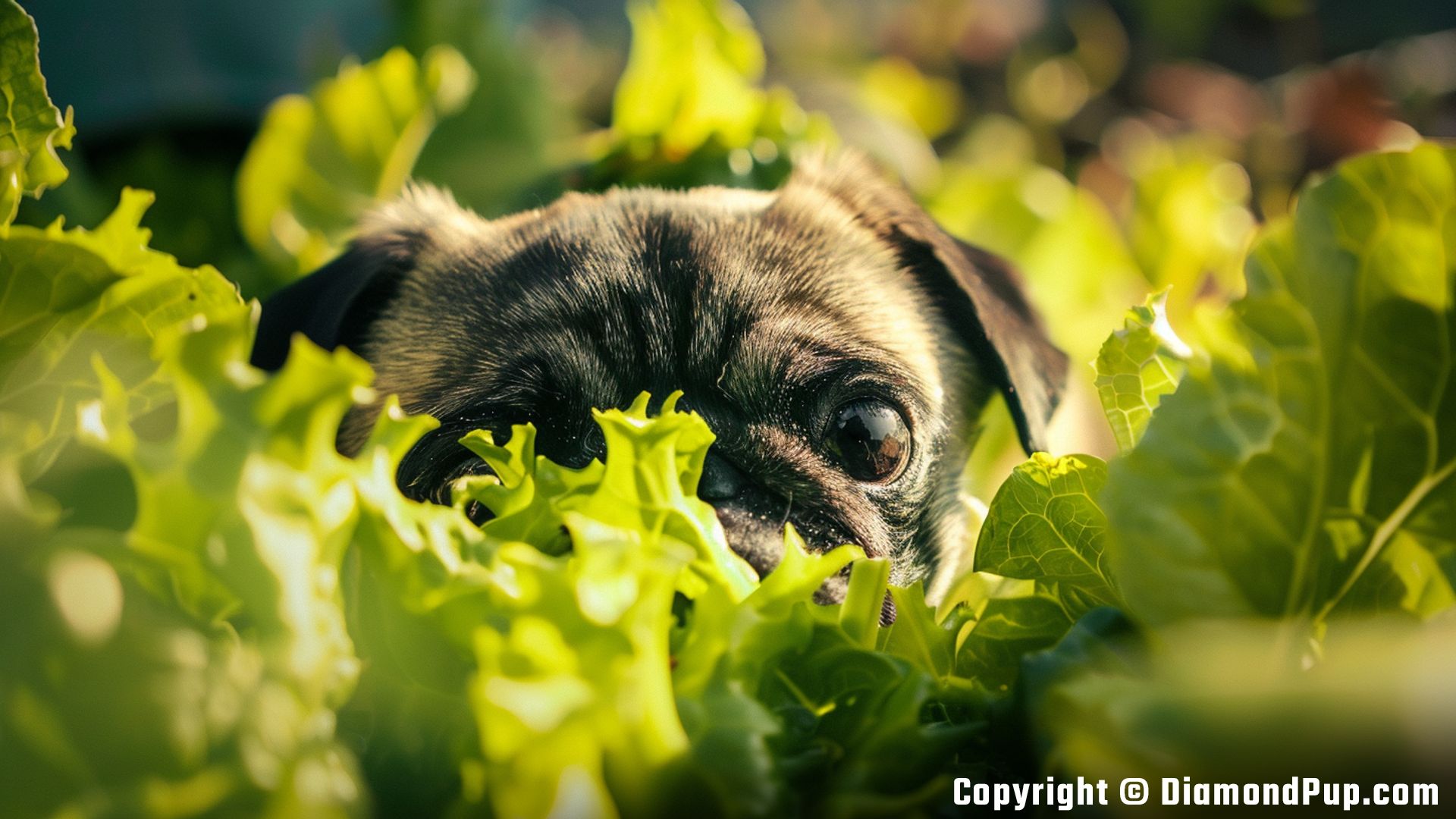
Are Lettuces Good for Pugs?
Yes, Lettuce can be a beneficial addition to your pug's diet. Packed with essential vitamins such as vitamin A, vitamin K, and vitamin C, Lettuce can contribute to your pug's overall health and well-being. These vitamins play a crucial role in supporting your pug's immune system, vision, and skin health. Additionally, Lettuce is low in calories and high in fiber, which can be helpful for weight management and digestion in pugs, who are prone to obesity and digestive issues.
However, it's important to note that Lettuce should only be given to your pug in moderation and as a supplement to their regular balanced diet. While it can provide some nutritional benefits, it should not replace their primary source of nutrition, such as a high-quality commercial dog food specifically formulated for pugs. Always consult with your veterinarian before making any significant changes to your pug's diet to ensure it is appropriate for their individual needs and health status.
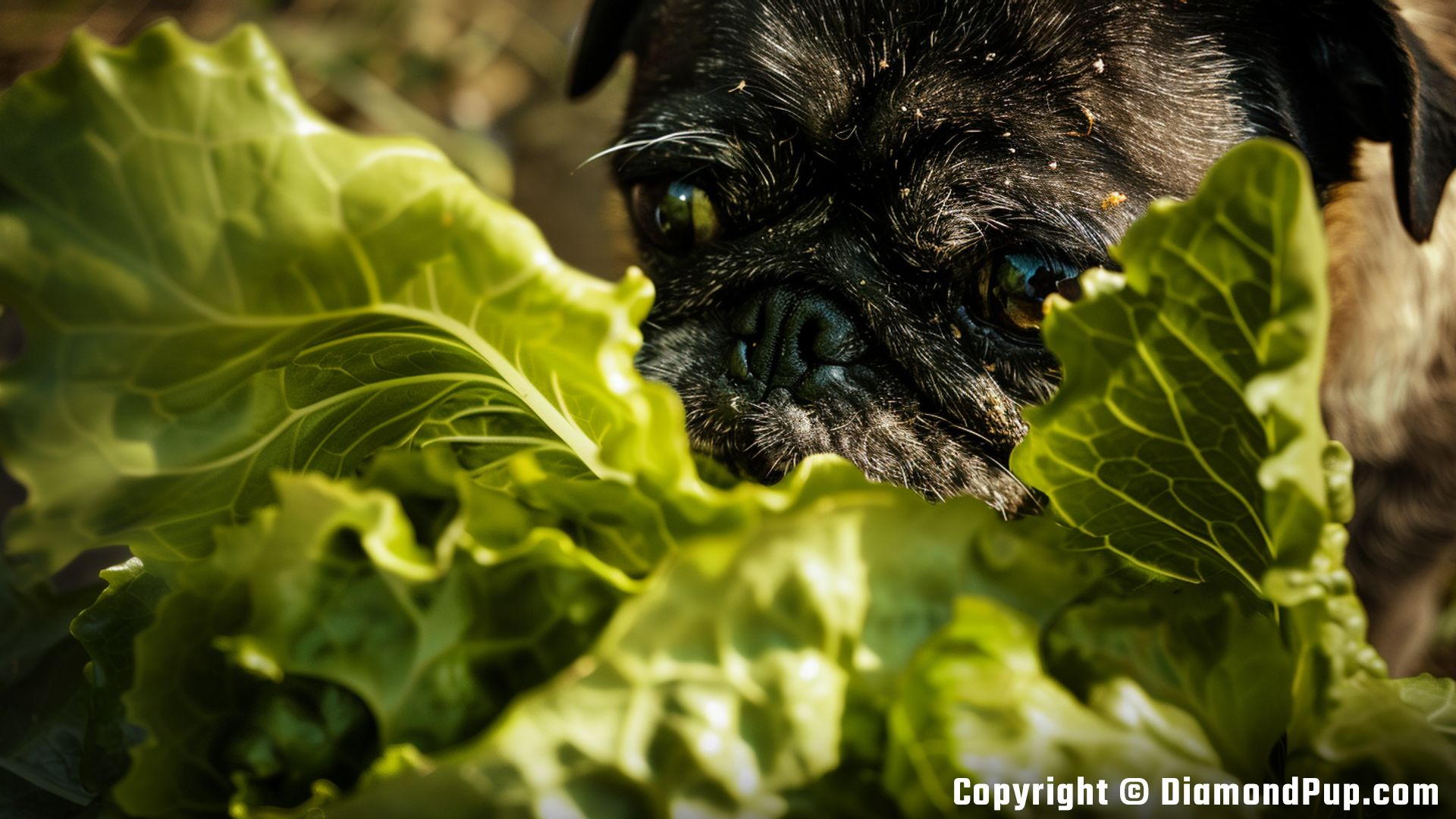
Understanding the Benefits of Lettuces for Pugs
When it comes to feeding Lettuce to your Pug, there are actually several benefits to consider. Lettuce is a low-calorie vegetable that can help with weight management, which is important for a Pug's tendency towards obesity. It's also high in fiber, which can aid in digestion and promote a feeling of fullness, helping to prevent overeating. Additionally, Lettuce contains vitamins A and K, as well as some minerals like calcium and potassium, which can contribute to your Pug's overall health and wellbeing.
However, it's important to remember that Lettuce should be given to your Pug in moderation and as part of a balanced diet. While it can provide some nutritional benefits, it should not be the sole source of nutrients for your pet. Always consult with your veterinarian before making any significant changes to your Pug's diet to ensure that it meets their specific nutritional needs.
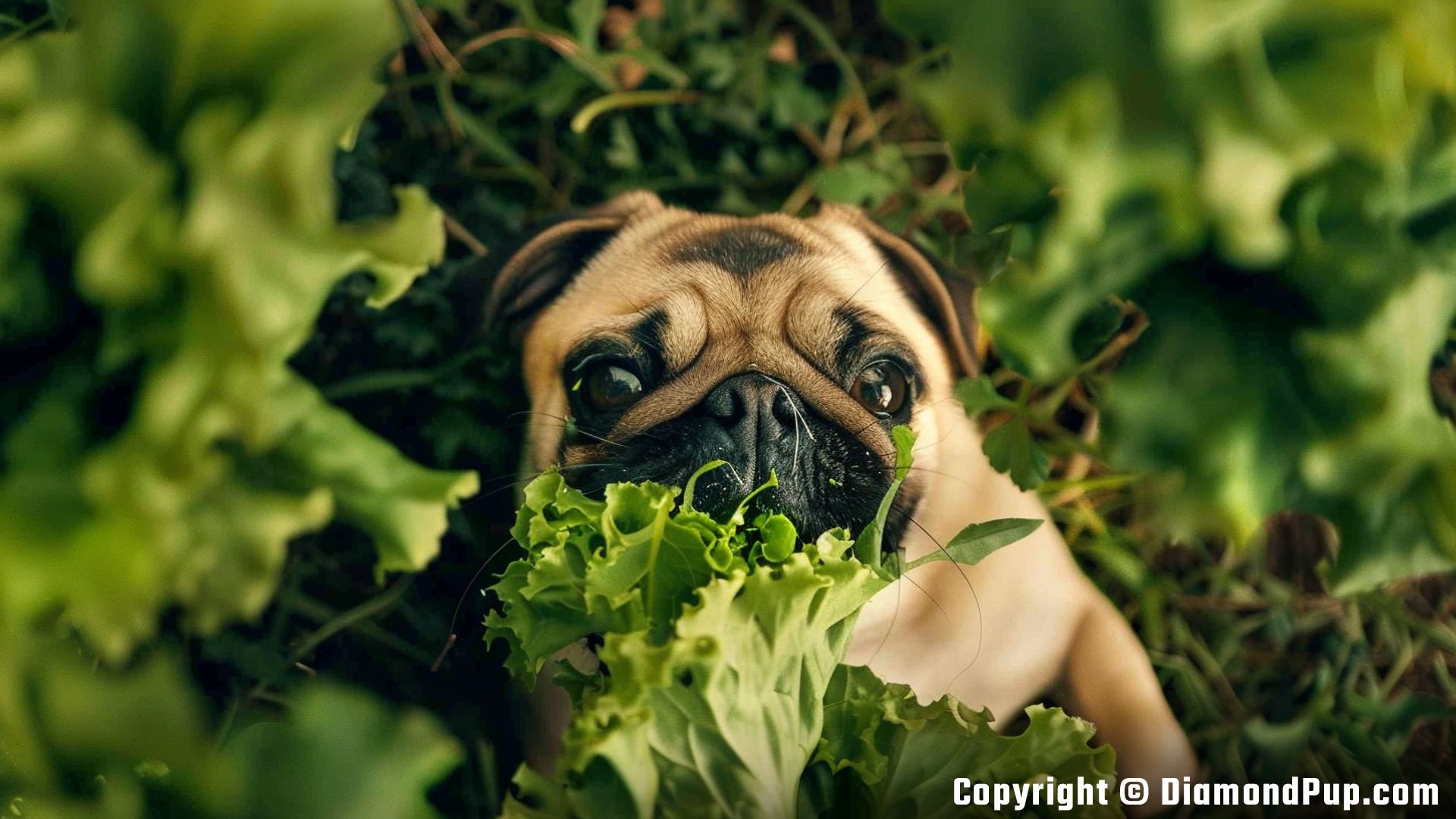
Nutritional benefits of Lettuces for Pugs
When it comes to the nutritional benefits of Lettuce for Pugs, this leafy green packs a punch. Lettuce is extremely low in calories, making it a great option for pugs who may need to watch their weight. It is also high in fiber, which can promote healthy digestion and prevent constipation, a common issue in the pug breed. Additionally, Lettuce contains vitamins A and K, which help support your pug's immune system and overall health.
Furthermore, Lettuce is a good source of antioxidants, which can help reduce inflammation in your pug's body and protect against chronic diseases. Overall, incorporating Lettuce into your pug's diet can provide a refreshing and nutritious treat that supports their well-being.
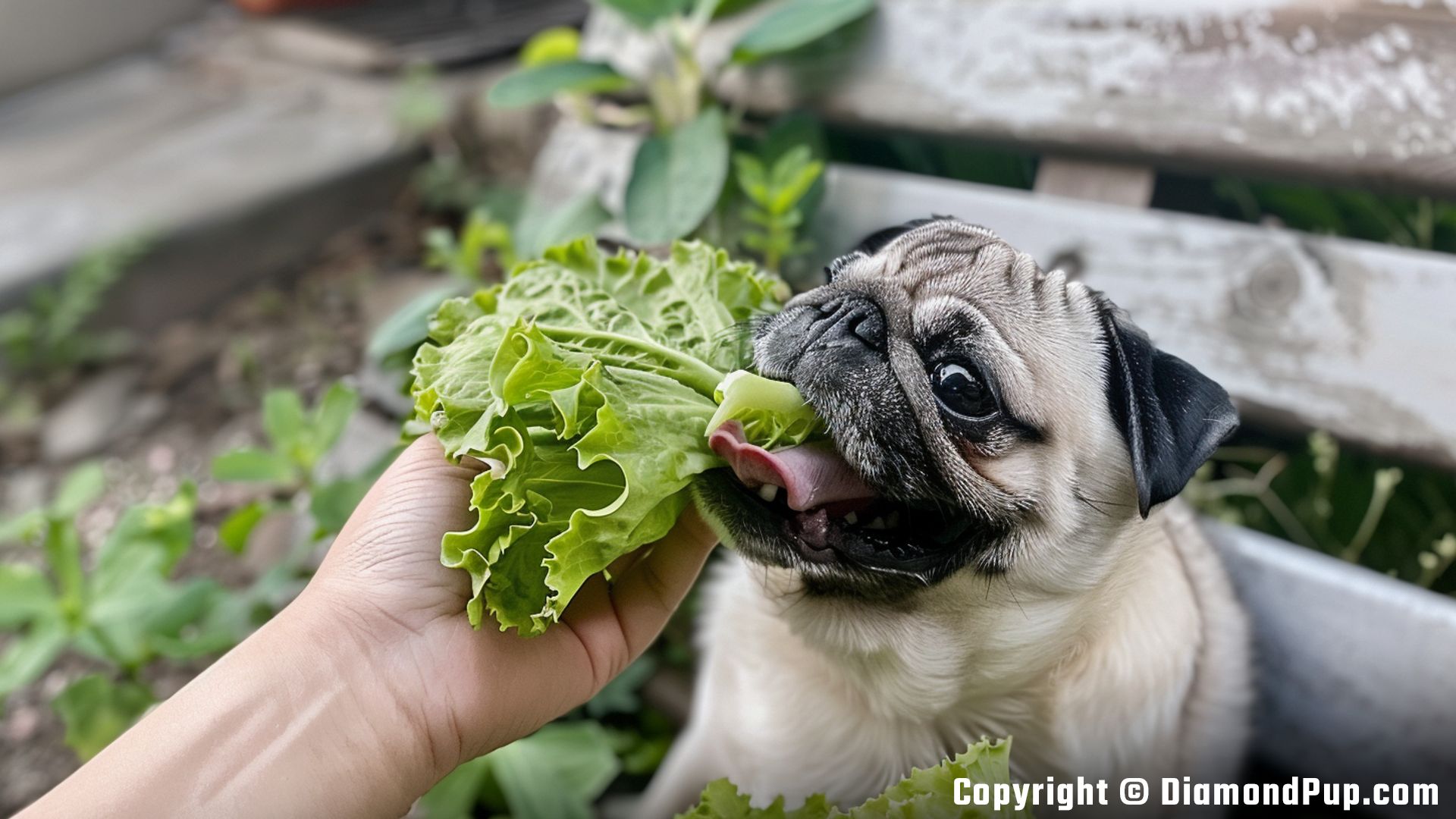
Safely Introducing Lettuces to Your Dog's Diet
When introducing lettuce to your pug's diet, it's important to start slowly to prevent any digestive upset. Begin by offering small, bite-sized pieces of lettuce and observe how your pug reacts. Some pugs may enjoy the crisp texture of lettuce, while others may be less interested. It's also a good idea to wash the lettuce thoroughly to remove any pesticides or bacteria that could be harmful to your pet.
Additionally, consider incorporating lettuce as a treat or topping rather than a main meal. While lettuce can provide some added fiber and hydration to your pug's diet, it should not replace their regular food, which is specifically formulated to meet all their nutritional needs. As always, consult with your veterinarian before making any significant changes to your pug's diet to ensure it's safe and appropriate for their individual health needs.
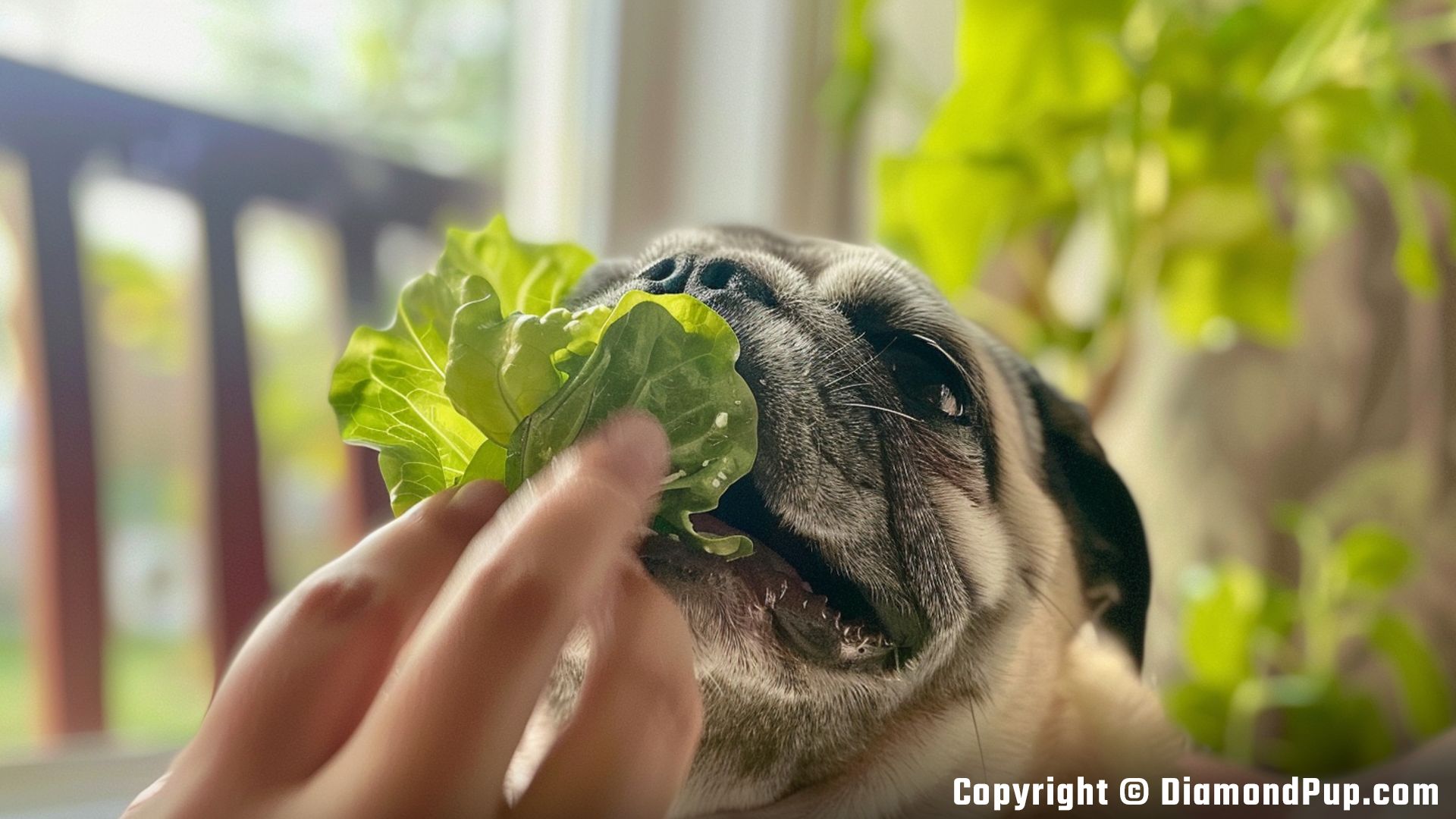
How much lettuce can a dog eat safely?
When it comes to feeding your Pug lettuce, moderation is key. While lettuce can be a healthy addition to your pug's diet, it should only make up a small portion of their overall food intake. Ideally, lettuce should make up no more than 10% of your pug's daily diet. This is because lettuce is low in calories and essential nutrients that your pug needs for optimal health.
Feeding your pug too much lettuce can lead to gastrointestinal upset, including diarrhea and gas. It's important to remember that lettuce should not replace their regular balanced diet, but rather complement it as an occasional treat. Always consult with your veterinarian before making any significant changes to your pug's diet, including introducing new foods like lettuce.
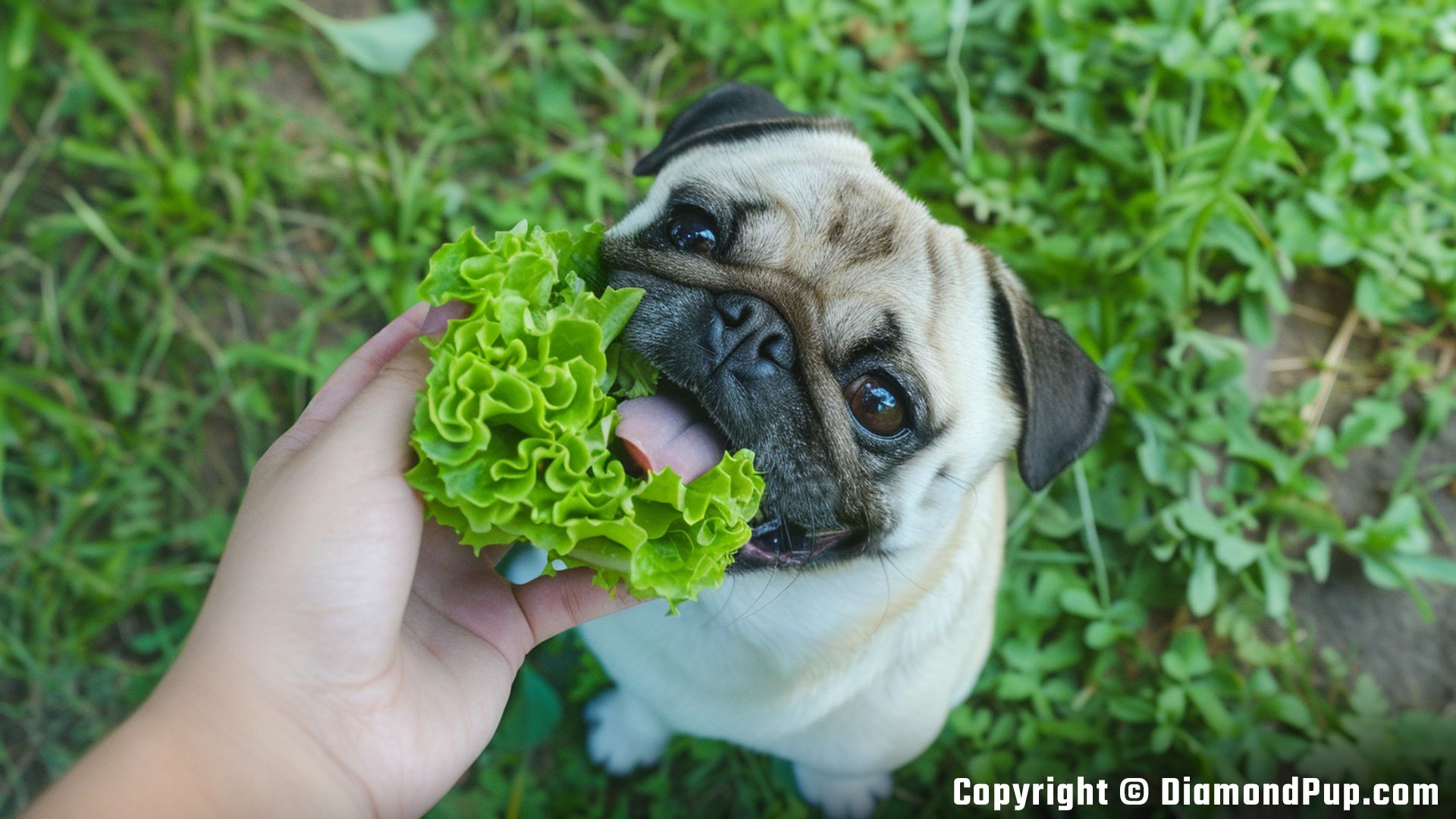
Tips to Remember When Feeding Your Dog Lettuces
When feeding your pug lettuce, it's important to remember a few key tips to ensure they can digest it easily. Firstly, always wash the lettuce thoroughly to remove any pesticides or harmful bacteria that could potentially upset your pug's stomach. Secondly, it's best to offer small, bite-sized pieces of lettuce to prevent choking hazards, especially for a brachycephalic breed like the pug. Additionally, make sure the lettuce is fresh and crisp, as wilted lettuce may not only be unappetizing to your pug but also less nutritious. Lastly, monitor your pug after introducing lettuce into their diet to watch for any signs of gastrointestinal upset or allergies.
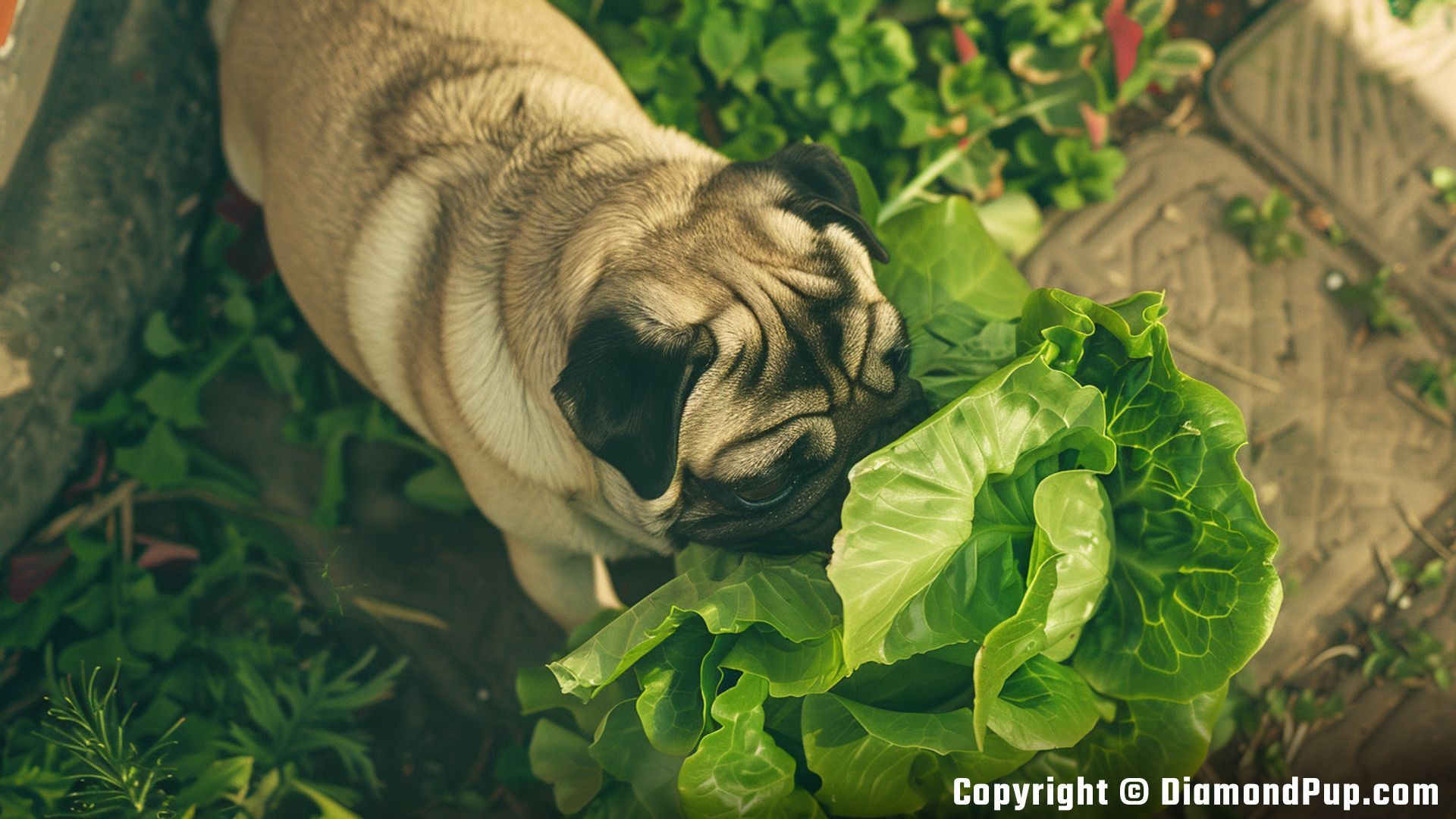
Feeding Your Dog Lettuces
When it comes to feeding your pug lettuce, it's essential to choose the right type of lettuce and prepare it appropriately. Pugs can safely consume romaine lettuce, as it is low in oxalic acid compared to other types of lettuce, making it less likely to cause digestive issues. It's important to wash the lettuce thoroughly to remove any pesticides or bacteria before serving it to your pug. Additionally, lettuce should only be given to pugs in moderation as it is not a significant source of nutrients for them.
While lettuce can be a fun and hydrating snack for your pug, it should not replace their balanced diet. Remember to consult with your veterinarian before making any significant changes to your pug's diet, including adding lettuce as a treat.
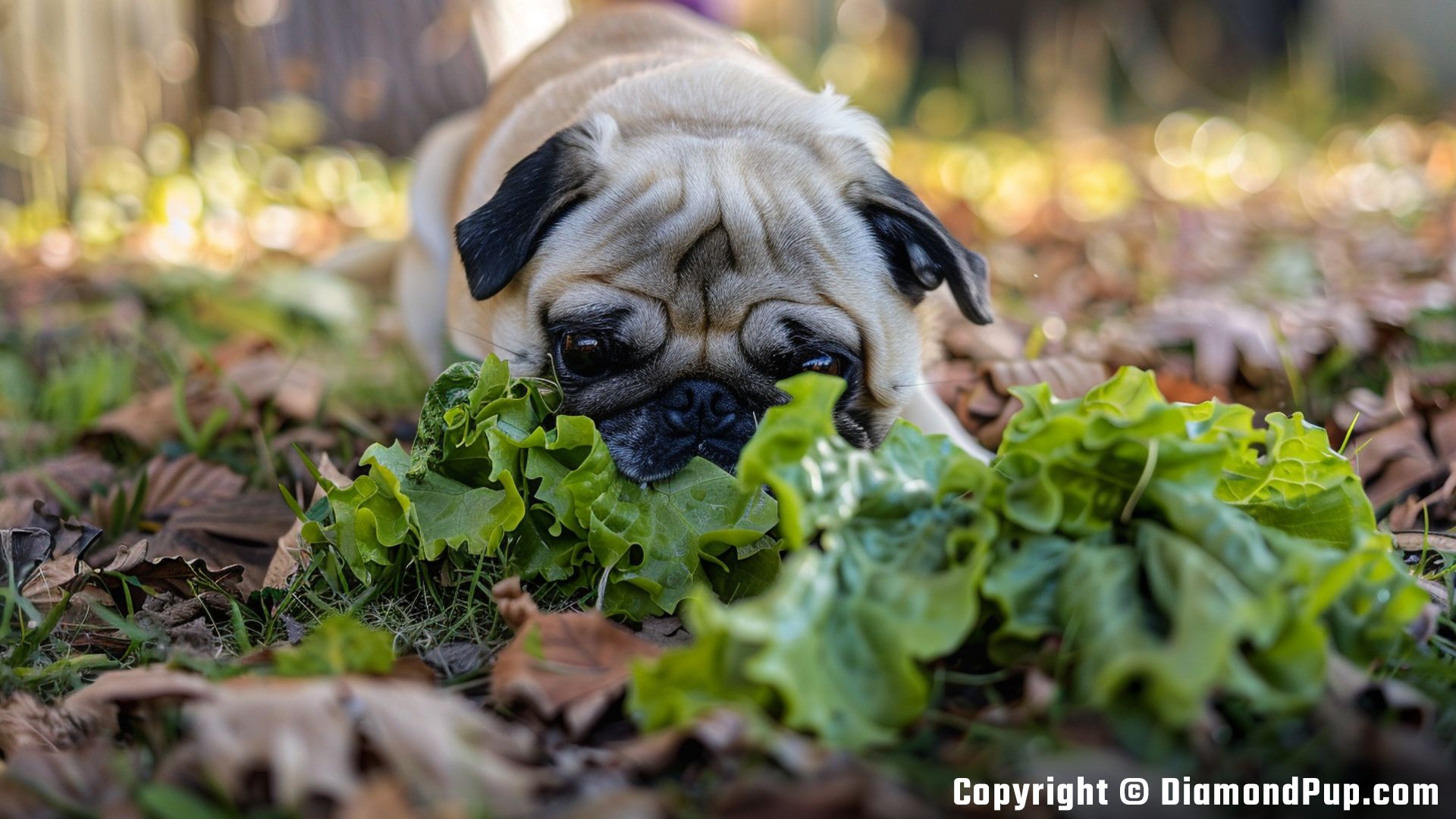
How to properly feed your dog Lettuces
When it comes to feeding your Pug lettuce, it's essential to prepare it properly to ensure they can digest it easily. Start by washing the lettuce thoroughly to remove any dirt, pesticides, or chemicals that may be harmful to your pet. Next, chop the lettuce into small, bite-sized pieces to prevent choking hazards, especially for a breed like Pugs that have a brachycephalic (short-nosed) skull shape. Introduce lettuce slowly into your Pug's diet and monitor for any signs of digestive upset, such as vomiting or diarrhea. Remember, lettuce should only be a small part of a balanced diet for your Pug, so be sure to consult with your veterinarian to determine the appropriate portion size based on your dog's individual needs.
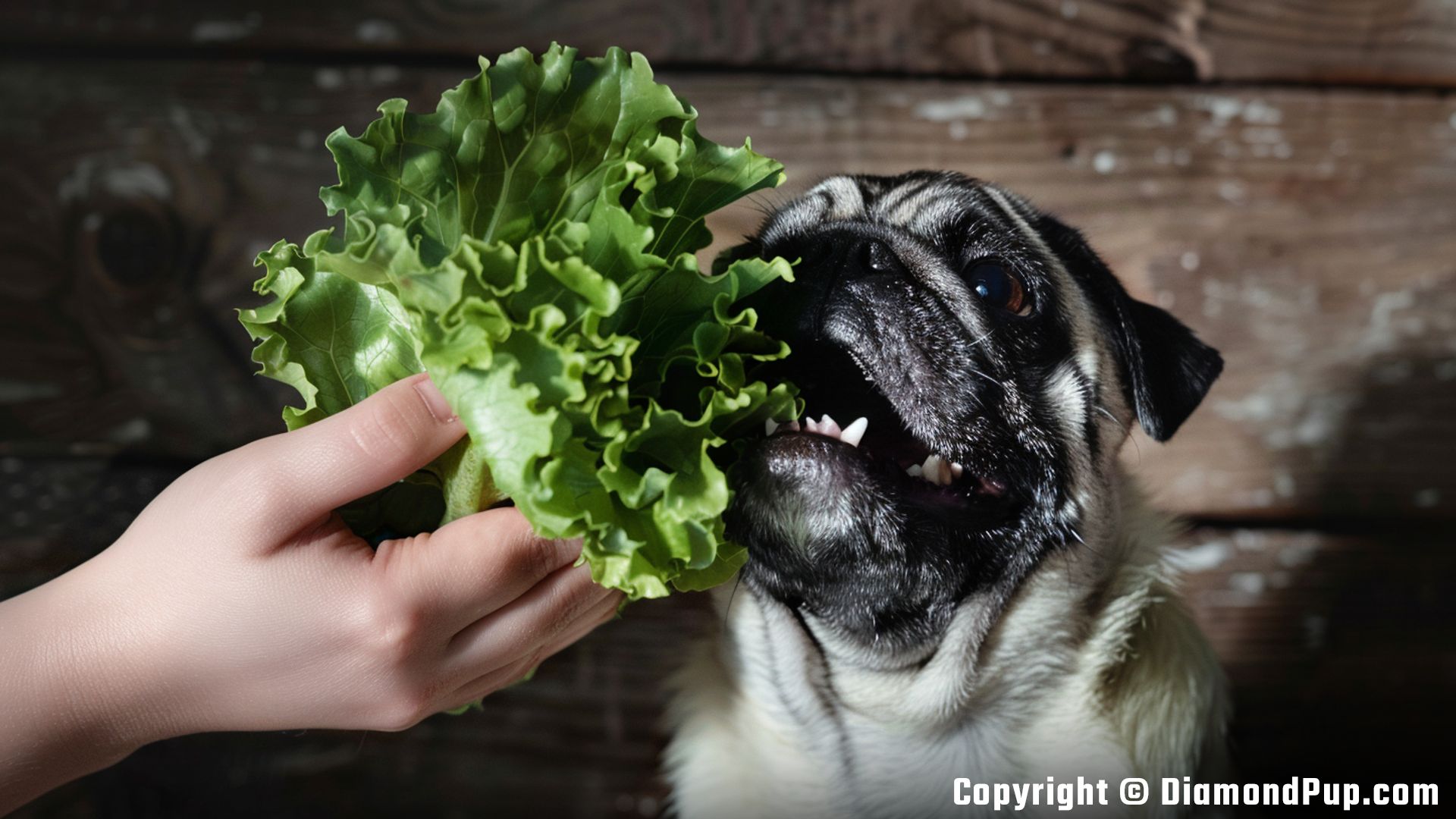
Do Pugs Like Lettuces?
As a veterinarian nutritionist, I can confidently say that pugs can indeed enjoy lettuce as part of their diet. Pugs are known to have a tendency towards obesity, so incorporating low-calorie, nutrient-dense foods like lettuce can be a healthy option for them. Additionally, the crunchiness of lettuce can provide some entertainment and mental stimulation for pugs, making it a fun addition to their meals.
When offering lettuce to your pug, make sure to wash it thoroughly to remove any pesticides or harmful bacteria. Cut the lettuce into bite-sized pieces to prevent choking hazards, especially for a brachycephalic breed like the pug. Introduce lettuce gradually into their diet to ensure they tolerate it well and do not experience any digestive upsets. Overall, lettuce can be a safe and enjoyable treat for your pug to snack on.
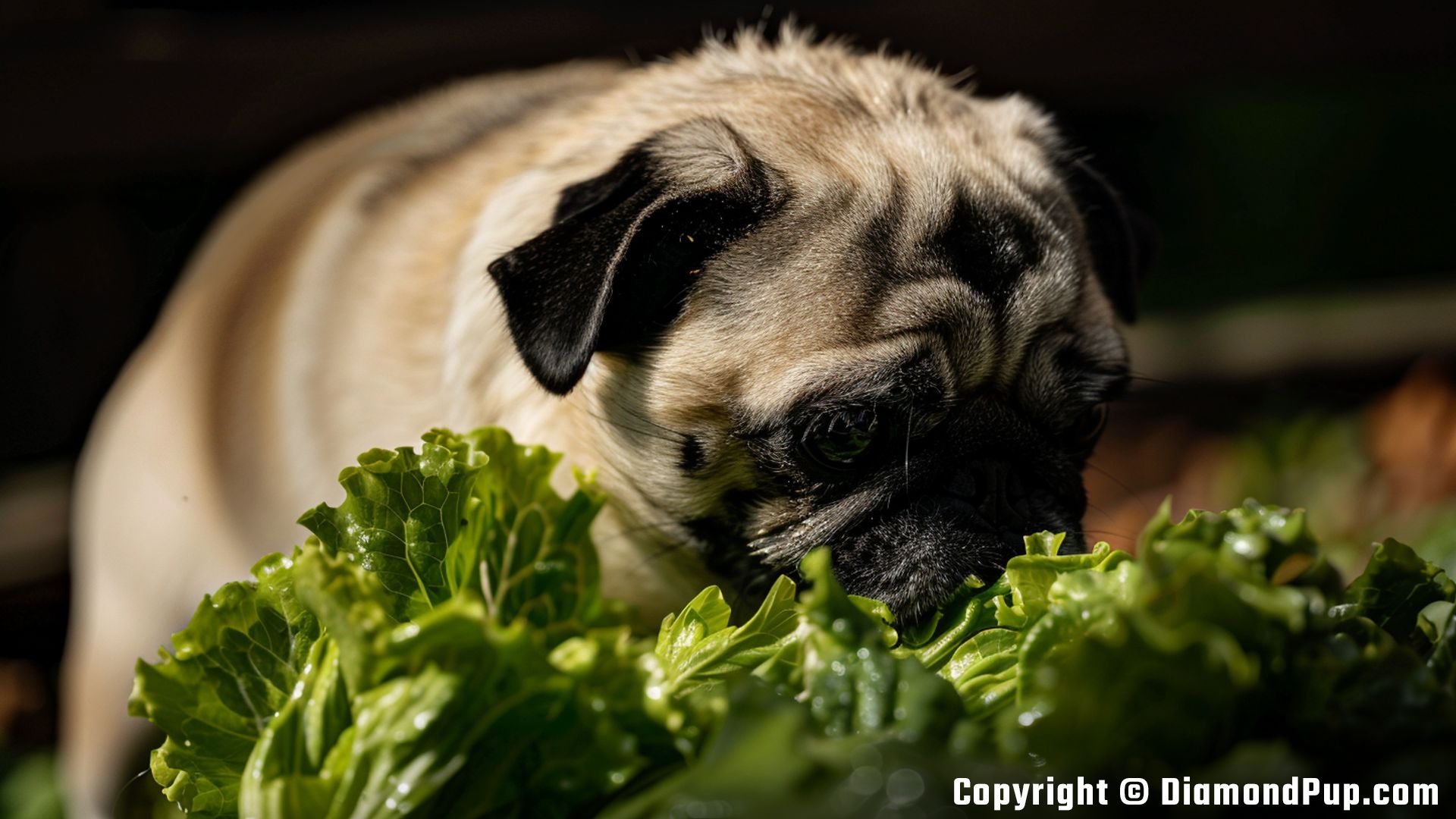
Special Consideration for Pugs
Due to their brachycephalic (short-nosed) anatomy, Pugs can be prone to breathing issues, as well as obesity. When considering feeding your Pug lettuce, it is important to note that certain types of lettuce, like iceberg lettuce, have a high water content that may contribute to them feeling full without providing significant nutritional value. Therefore, it is recommended to choose darker, leafy greens such as romaine lettuce, kale, or spinach which offer more vitamins and minerals per bite. Additionally, it's crucial to cut the lettuce into bite-sized pieces to prevent any choking hazards, especially for Pugs who tend to inhale their food quickly.

Can Puppies Have Lettuces?
When it comes to puppies, introducing new foods should be approached with caution. While lettuce can be a healthy snack for adult pugs, it may not provide the essential nutrients that growing puppies need. Puppies have different nutritional requirements than adult dogs, requiring a diet higher in calories, protein, and fat to support their growth and development.
Instead of lettuce, opt for puppy-specific food that is specially formulated to meet the needs of growing pugs. These foods are balanced to provide the right amount of nutrients for puppies, ensuring they grow up strong and healthy. As your puppy matures into an adult, you can gradually introduce lettuce as a low-calorie treat, but always monitor for any signs of digestive upset.
Are there any Pugs that shouldn't eat Lettuces?
While pugs, in general, can safely enjoy lettuce as part of their diet, there are a few exceptions. Pugs that have digestive issues, such as a history of gastrointestinal upset or sensitivity, may not tolerate lettuce well. Additionally, pugs that are prone to bladder stones should avoid high-oxalate lettuces like spinach, as they can contribute to the formation of these stones. Can a pug eat potato Always consult with your veterinarian before making any significant changes to your pug's diet, especially if they have underlying health conditions.
Recipes for Feeding Your Dog Lettuces
When considering a lettuce option for your pug, it's important to choose a leafy green that is low in oxalates, as these compounds can interfere with calcium absorption and potentially lead to kidney issues. Opt for varieties like romaine lettuce, green leaf lettuce, or butter lettuce, as they have lower oxalate levels compared to spinach or kale. Additionally, always wash the lettuce thoroughly to remove any pesticides or bacteria that could be harmful to your pug's digestive system.
When preparing the lettuce for your pug, it's best to chop it into small, bite-sized pieces to prevent choking hazards and aid in digestion. You can mix the lettuce with your pug's regular food or offer it as a standalone snack. Remember to monitor your pug for any digestive issues or allergic reactions when introducing lettuce into their diet, and consult with your veterinarian if you have any concerns.
Alternatives to Lettuces for Pugs
While lettuce can be a healthy option for pugs, there are alternative vegetables that can also provide beneficial nutrients for your furry friend. Brussels sprouts are a great choice as they are rich in fiber, antioxidants, and vitamin C, which can help boost your pug's immune system and support digestion. Additionally, green beans are another excellent option as they are low in calories and high in vitamins A, C, and K. These crunchy vegetables can be a tasty and nutritious addition to your pug's diet, offering a variety of health benefits.
When selecting alternative vegetables for your pug, it's essential to consider their nutritional content and how they can contribute to your pug's overall health. Remember to introduce new foods slowly and in moderation to avoid any digestive upset, and always consult with your veterinarian if you have any concerns about incorporating new vegetables into your pug's diet.
Common Questions About Pugs and Lettuces
One common concern among pug owners is whether lettuce will be difficult for their flat-faced breed to chew. While pugs do have a brachycephalic, or short-muzzled, profile which can make eating certain foods a bit trickier, lettuce should not pose a significant challenge. In fact, lettuce is quite soft and easy to chew, making it a suitable option for pugs with their unique facial structure.
Another question that often arises is whether lettuce will upset a pug's sensitive stomach. Fortunately, lettuce is gentle on the digestive system and is unlikely to cause any issues for your furry friend. Just be sure to wash the lettuce thoroughly to remove any pesticides or dirt before serving it to your pug to avoid any potential gastrointestinal upset.
Subscribe Now
Stay updated with the latest news and articles! We'll keep you updated on the latest tips for your pet Pug
